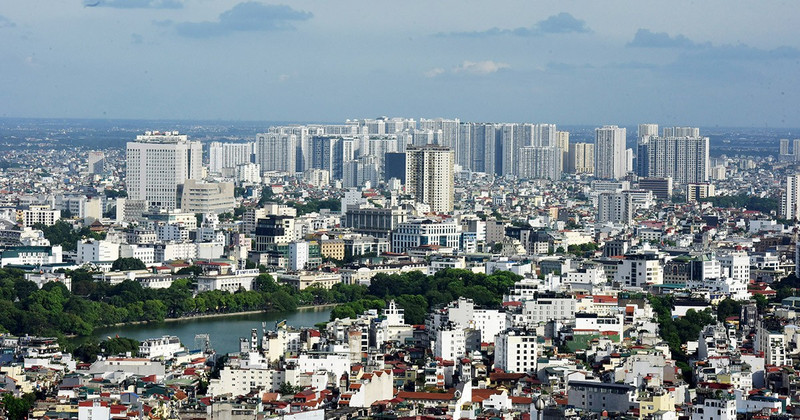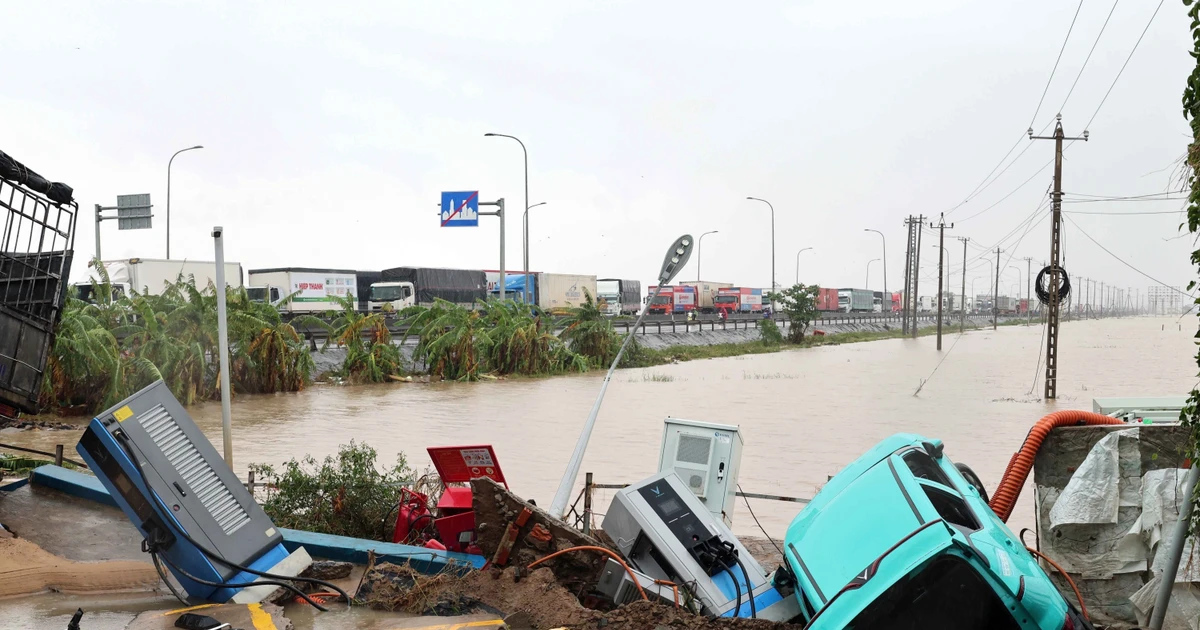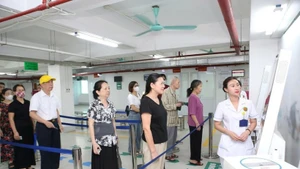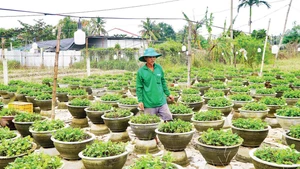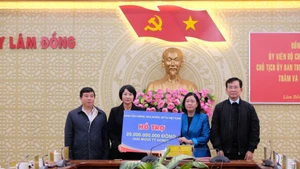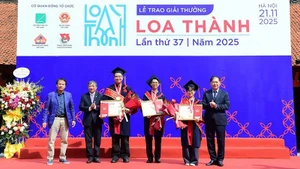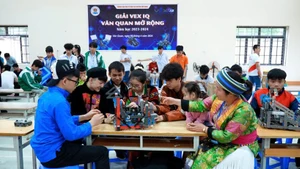One of the key issues that needs to be prioritised is the early completion of the legal framework for urban development, encompassing all stages from planning, implementation, and management to even urban redevelopment.
Rapid urbanisation
Over the years, Vietnam's urban system has grown significantly in both quantity and scale, forming urbanised regions with clusters and chains of cities spread across the country's regions. In 1998, Vietnam had only 633 urban areas, with urban residents accounting for just 24% of the population. A decade later, the number had risen to 740, with the number of cities ranked fourth grade or higher having increased from 86 to nearly 200.
Urbanisation has accelerated in key economic regions, with major urban areas becoming more evenly distributed across the nation. Many new urban areas have emerged and developed, while existing ones have been gradually upgraded and expanded. These improvements include enlarging land area, enhancing technical infrastructure (transportation, electricity, water supply, wastewater management, and environmental sanitation), and strengthening social infrastructure (education, healthcare, culture, and sports). As a result, the urban landscape has undergone significant changes towards greater modernity and sophistication, with the quality of life for urban residents gradually improving.
Vietnamese urban areas have been making increasingly positive contributions to socio-economic development and enhancing the nation's global standing. Thanks to the great contributions, Vietnam's economy reached a scale of 430 billion USD in 2023, with the average income in urban areas nearly 1.5 times higher than in rural areas.
Nguyen Viet Hung, Deputy Minister of Construction
Despite significant progress, urban development in Vietnam still faces many limitations and inadequacies that have not been fully resolved. While urban areas have been classified, their development models remain unclear. The criteria for urban classification lack distinctive and specific regional considerations, failing to encourage improvements in urban quality.
Development models lack integration, and the adoption of new and sustainable development models lacks depth. Urban distribution within Vietnam’s urban system still lacks cohesion, and regional connectivity has not been promoted. Urban construction and development has often been out of alignment with established plans, been poorly linked to resource allocation, and remained fragmented.
Infrastructure in major urban centres is overstretched, struggling to cope with climate change impacts and large-scale epidemics. Connectivity between urban areas is also weak. Urban management and governance capacity remain limited, with slow modernisation and inadequate application of technology and digital transformation. Local authorities’ roles and responsibilities in urban management are not sufficiently emphasised, and there is a lack of community participation and engagement in urban development efforts.
Do Viet Chien, Vice Chairman of the Vietnam Real Estate Association, has stressed that the legal framework for urban development remains incomplete and lacks binding mechanisms. Although the prime minister has approved the Urban and Rural System Planning for the 2021-2030 period, with a vision to 2050, the critical issue lies in the implementation phase, which continues to face persistent bottlenecks.
In practice, the execution of plans often stops at the announcement stage, with insufficient mechanisms for oversight and review. As a result, the establishment of a comprehensive law on urban development management is urgently needed. Such a law would create a coherent process encompassing urban construction, implementation, management, and redevelopment.
Urban development must be a seamless and integrated process
Tran Ngoc Chinh, Chairman of the Vietnam Urban Planning and Development Association (VUPDA), highlighted the increasingly significant role of urban areas, as demonstrated by an impressive growth rate of 44.3% in 2024, surpassing the government's target. This achievement sets a crucial foundation for further emphasising the importance of urban development in Vietnam's overall socio-economic progress.
On the other hand, urban development has now reached a new level, requiring the active participation of the entire political system. The Politburo’s Resolution No. 06-NQ/TW was issued for the first time on January 24, 2022, outlining strategies for urban planning, construction, management, and sustainable development until 2030, with a vision toward 2045.
To implement this resolution, the government adopted Resolution No. 148/NQ-CP on November 11, 2022, detailing an action plan to realise these goals. General Secretary To Lam also directed relevant stakeholders to actively engage in institutional development, with urban development being a critical focus.
Chien said a major concern for public discourse is the resources needed for urban development, particularly the concept of "using urban areas to support urban areas". Land resources play a crucial role in this process. This approach is not difficult and has been successfully implemented in many countries through the establishment of entities granted authority by the government or funded by state capital to focus on land reclamation.
These entities specialise in land acquisition, developing infrastructure for these areas, and then auctioning land to investors. They may even create mechanisms to attract investors to contribute equity for the development of land funds. If successfully implemented, this model would allow the state to capture a larger portion of land rent profits, rather than the current system where profits often go to private companies and investors. This would serve as an important resource to promote healthy and sustainable urban development.
Nguyen Cao Vien, Deputy Director of the Urban Development Department under the Ministry of Construction, stated that the ministry is focusing on finalising the draft Law on Urban Development Management for submission to the government, in line with the strategic directions of Resolution No. 06-NQ/TW. This draft is based on five breakthrough perspectives.
The first focus is on institutionalising the Party's guiding principles and the State’s policies on building and developing sustainable urban areas in Vietnam. This includes tasks related to improving the legal framework and developing regulations in the current phase of urban growth.
The second priority is to ensure that the legal system is constitutional, lawful, unified, and effective. It is important to inherit, enhance, and codify regulations that have been proven to be practical and effective. Additionally, selectively drawing from the legal frameworks of other nations and international organisations, especially those aligned with Vietnam’s development realities and international integration trends, will be valuable.
The third is to create a sustainable urban network, ensuring proper distribution and alignment with regional and local needs. Urban areas, whether newly built, developed, renovated, or redeveloped, should adhere to clear planning, ensuring systematic, uniform, and balanced growth across all regions. This includes protecting and using natural resources in an efficient manner, especially land resources.
The fourth perspective aims at creating favourable conditions for cities to evolve into green, smart urban centres that are resilient to climate change, natural disasters, and pandemics. These cities should offer a high quality of life for residents and attract investment, while playing a leading role in driving socio-economic development.
The fifth priority emphasises the importance of local government accountability and the active participation of communities and political-social organisations in urban management. Decentralising power and improving the effectiveness and efficiency of state management over urban development will be key to achieving long-term goals.
In addition, the draft law clearly defines the scope of regulation, preventing overlaps between existing and forthcoming provisions. It aims to promptly institutionalise the Party’s policies, directives, and leadership regarding urban management, urban development, and urban infrastructure. The draft also incorporates advancements in science and technology as well as global trends, and harnesses the potential of urban areas, with the ultimate goal of achieving sustainable development. This approach ensures that urban development aligns with both national priorities and the evolving global landscape.
